Bourbon whiskey, a true American classic, is produced using a special process that sets it apart from other whiskeys. Even though the basic production steps are similar to those of Scotch whisky or Irish whiskey, regional characteristics and individual distillery methods play a decisive role. Above all, the grain used, the yeast, the new American white oak barrels and the ageing process characterise the unique flavour of each bourbon. The following overview tells you everything you need to know about the production of this special whiskey and how the various factors influence the flavour.
What is bourbon?
Bourbon whiskey is an American whiskey made from at least 51% corn, matured in new, charred oak barrels and complies with strict legal requirements. Its characteristic flavour is characterised by notes of vanilla, caramel and wood.
A brief digression: Tennessee Whiskey
For marketing reasons, Tennessee whiskey has separated itself from Kentucky straight bourbon and the Bourbon Act as a southern whiskey. However, the production process for these two types of whiskey is identical, apart from additional filtering with charcoal before the barrels are filled.
The raw materials
The quality of the raw materials plays a decisive role in the production of bourbon whiskey. Although the production equipment and climate are similar in many American distilleries, the distinguishing feature often lies in the selection and processing of the ingredients.
Grain selection and mash bill
The basis of a bourbon whiskey is the so-called mash bill - the recipe for the grain mixture. A minimum proportion of 51% corn is required by law, although many distilleries increase the proportion of corn to between 60 and 80%. The mixture is supplemented by rye and malted barley, which each make up 10 to 15 % of the mash bill. Some distilleries, such as Maker's Mark or Bernheim, also use wheat to produce a softer and smoother whiskey. The proportion of wheat is usually around 10 %.
The different types of grain are first ground separately. In the past, hammer mills were used, but it was discovered that the intense heating of the grain can have a negative effect on the flavour. Today, the grains are usually only lightly crushed to open the grain husk before a fine grinding process takes place.
Water
Another key ingredient is fresh spring water. It is used to dissolve the starch from the grain and release sugar. Kentucky and Tennessee in particular offer excellent water for whiskey production due to their limestone layers. The limestone filters the water naturally and ensures purity and minerals that influence the flavour. Many distilleries have deliberately located themselves near such springs in order to have access to sufficient clear water at all times.
The mash
During mashing, the starch contained in the grain is converted into fermentable sugar. Cereal grains consist largely of starch, a poly sugar consisting of long chains of sugar molecules. While barley can naturally convert starch into sugar effectively through germination and an enzyme, this is not so easy with maize and rye. A different process is therefore used for these types of grain, as well as for unmalted barley: Cooking.
The cooker
The grain mixture (mash bill) is boiled for around 30 minutes to break down the starch and make it usable for later fermentation. Some distilleries, such as Early Times, use slightly increased pressure and higher temperatures to reduce the boiling time to around 25 minutes. This step is essential to break down the poly sugar chains into smaller units that can later be converted into alcohol by the yeast.
After cooking, the grain mixture is cooled before being transferred to the fermenter.
| Sequence | Cereals | Temperature | Remark |
|---|---|---|---|
| 1. | Maize | 114°C/220°F | longest cooking time (with overpressure) |
| 2. | Rye | 77°C/170°F | medium cooking time |
| 3. | Barley | 66°C/150°F | shortest cooking time (sensitive) |
The fermentation
Here, the sugar previously obtained in the mashing process is converted into alcohol by yeast, resulting in alcoholic fermentation.
After the grain mixture has cooled to around 25 to 30 °C, it is added to the fermenter together with a large quantity of yeast. During fermentation, the yeasts convert the sugar into alcohol and carbon dioxide (CO₂), releasing heat in the process. The process usually takes around three days and results in an alcohol content of 8 to 9.5% vol. Some distilleries extend the fermentation time, but rarely achieve more than 10 to 11% vol.
To control the fermentation temperature, many fermenters have water cooling. If the temperature rises above 35 to 40 °C, the yeasts die, which would stop the process. The size of the fermenters varies from distillery to distillery, with larger tanks generating more heat and therefore needing to be carefully monitored.
The secret of the yeasts!
Each distillery uses its own closely guarded yeast strains, which have often been cultivated over generations. The yeast is selected and propagated with the utmost care. From a small amount of yeast, which is often taken from a test tube, a larger quantity is first produced in nutrient solutions and sterile containers. Different yeast tanks are usually used for the production of different types of bourbon, which are individually maintained and renewed as required.
Explained in detail!
The selection and propagation of yeast is a meticulous process. In the past, natural yeasts were obtained from the environment, for example from fruit trees, and cultivated in a targeted manner. Today, the required quantity for fermentation is propagated from a single yeast cell. In a first step, the yeast is cultivated in a sterilised nutrient solution, whereby the pH value is strictly monitored. After propagation in small quantities, the yeast is transferred to a larger vessel, the so-called dona tub. Each distillery relies on specific yeast strains that are cultivated in their own tanks to produce the characteristic flavour profiles of their whiskeys. The dona tub is only used if the yeast stock is contaminated by foreign substances or vinegar bacteria.
Beer Well - intermediate stage between fermentation and distillation!
Once fermentation is complete, the resulting distiller's beer or ale is pumped into a so-called beer well, a large stainless steel tank that serves as an intermediate storage tank. From here, the beer is transferred to the distillation columns. The beer well is usually larger than the largest fermenter to ensure continuous production. This is also where the fermentation is assessed. The beer produced during fermentation is tested for flavours and quality, as these provide information about the purity of the yeast and the whiskey that will later be produced. Aromatic notes, such as an apple flavour, are considered a sign of quality. A decrease in flavour, on the other hand, indicates contamination of the yeast, which requires the use of a new yeast strain.
Distillation
The later bourbon is usually distilled from the beer in a continuously operating column still (distillation column). The distillation column consists of a vertical pipe that can be 5 to 20 metres high and up to 1.5 metres in diameter. There are several perforated trays inside, which allow gaseous components to rise and liquid residues to flow out. The "beer" is fed into the column at medium height and heated from below. This creates two opposing flows:
- Alcohol vapours rise to the top.
- Liquid residues flow downwards.
The temperature is regulated in such a way that the alcohol exits at the top in a gaseous state (78-85°C), while the "beer" boils at the bottom (95-100°C)
The height of the column influences the alcohol content of the distillate. Smaller columns achieve around 60 % alcohol by volume (120 proof), while higher columns can achieve concentrations of 80 % alcohol by volume and more.
After distillation, the alcohol vapour is passed through a copper container known as a doubler. This is used for catalytic conversion to remove unwanted sulphur compounds and refine the flavour of the whiskey. As many columns are not made of copper, the doubler is essential to ensure that the distillate comes into contact with copper.
White Dog
The alcohol vapour is cooled and liquefied in the condenser. The resulting raw distillate, known as the white dog, is then channelled into a spirit safe. From there, it is either transferred directly into barrels for maturation or into containers for transport. Before being filled into barrels, the white dog is regularly tasted to check its quality. For this purpose, it is diluted to around 20% alcohol by volume in order to better assess the flavours.
Efficiency
An exciting figure!
Around 9.5 litres of pure alcohol are produced per bushel of grain (approx. 35 litres). This corresponds to 400 to 450 litres of pure alcohol per tonne of grain. A bushel is a unit of measurement for determining volume!
Remains after distillation
The solid and liquid residue, known as stillage, collects at the bottom of the column. This is either used as animal feed or fed back into the sour mash process.
Sour mash process
Sour mash is a technical process that ensures consistent production and supports the yeasts in their work. In this process, some of the acidic residue from distillation (known as stillage) is added to the mash, which consists of ground grain and water.
Despite frequent mention in advertising, the sour mash process has no direct influence on the flavour of the bourbon!
The aim of the sour mash process
- Optimisation of the pH value: The freshly prepared mash has a neutral pH value of around 7, at which the yeasts cannot work optimally. By adding the sour mash (pH value 5.0-5.4), the mash is slightly acidified, resulting in a pH value of 5.4-5.8. This range is ideal for the yeasts to efficiently convert the sugar into alcohol.
- Stability and consistency: The adjusted pH value ensures a stable fermentation environment and prevents unwanted bacterial contamination.
Animal feed
The so-called setback, a mixture of water, protein, fat and fibres, collects at the bottom of the distillation column. After pumping, the fibre content is sieved out and the liquid is dried using superheated steam. The solid residue is passed on to farmers as protein-rich animal feed.
Barrel production in the USA
In Kentucky and Missouri, companies specialise in the production of barrels made from American white oak . These barrels may only be used once for straight bourbon whiskey and hold around 53 American gallons (approx. 200 litres).
The barrel staves are first joined together, softened with hot steam and then bent into their oval shape. Toasting is a special method that gives the bourbon its typical flavour. This involves heating the inside of the barrels over a gentle fire, which caramelises the wood sugar and creates a red layer. This process takes around 12 minutes.
The barrels are then burnt out with a strong flame for 6 to 12 seconds to create a charcoal layer. The thickness of this layer is indicated in degrees (1-4). After filling, the barrels are sealed with a stopper ("bung") and transported by lorry to the warehouses.
Good to know: barrel instead of cask!
In the American whisky world, the cask is called a 'barrel'. There are various definitions for a barrel. The most famous is the petroleum barrel with a volume of 158.97 litres. However, the normal American barrel contains 31 ½ gallons = 119.23 litres. 1 gallon corresponds to 3.785 litres.
Barrel storage
Cask ageing has a decisive influence on the flavour of the whiskey. The freshly distilled "White Dog" is filled into new, internally burnt oak barrels. This so-called "charred barrel" technique gives the bourbon its characteristic aromas, colour and soft texture.
During storage in the warehouses, the whiskey penetrates deep into the wood pores and reacts with the wood ingredients. Fluctuations in temperature and humidity promote the chemical processes between the whiskey and the wood. The minimum storage period for a Kentucky Straight Bourbon is two years, but most bourbons are matured for between four and eight years.
The warehouses are often multi-storey and also influence the ageing process. In the past, warehouses were built that were 4 to 5 storeys high. Between 3 and 6 layers of barrels are stored on each floor. On the upper floors, where it is warmer, the bourbon matures faster, while on the lower floors it matures more slowly. After the storage period, the whiskey is tasted and bottled either as a single barrel, small batch or as a blend of different barrels, depending on the quality.
Type of storage
There is storage with rotation and storage without rotation. In the first method, the whisky is stored under special conditions. These buildings consist of a beam skeleton that allows the casks to move horizontally and lifts for vertical movement. A typical warehouse holds around 20,000 casks and has natural ventilation through numerous windows to equalise the temperature. The climate inside the warehouses varies greatly: it is hot under the roof in summer, while it remains pleasantly cool on the ground. In the past, barrels were often rotated in order to evenly distribute the benefits of different storage positions. However, this meant that a third of the storage capacity had to remain free. Today, many distilleries do without rotation. Instead, barrels from different storage positions are mixed before bottling. This saves on labour costs and makes full use of the warehouses. At the same time, the central area of the warehouse provides ideally matured barrels for high-quality small batch bourbons and single barrel bottlings.
Fire hazard in the warehouses
In 1996, several warehouses at the Heaven Hill distillery burned down. The burning whiskey made its way through the distillery down to the river. As a result, the distillery also fell victim to the flames and the whiskey continued to burn on the river all night.
Prevention:
Today, attempts are made to avoid the risk of fire by installing a sprinkler system in each warehouse and by building the warehouses at a safe distance from each other. As a passive safety measure, the wooden skeleton is designed in such a way that the warehouse collapses in the event of a fire and does not damage other warehouses.
Re-use of the barrels
Barrels used to store bourbon whiskey may only be used once in accordance with the regulations for straight bourbon whiskey. However, this is not the end of their life cycle. Many of these barrels find a new purpose around the world, for example for the maturation of Scotch whisky, rum, tequila or beer. In particular, the caramelised and burnt inner walls of the barrels lend additional flavours to other spirits and drinks. This reuse not only contributes to sustainability, but also creates an interesting variety of flavours in the end products.
Blending
After barrel ageing, the crucial question is what type of whiskey should ultimately be bottled. There are different approaches that vary depending on the desired end product. The blending process for bourbon plays a central role in developing or refining different flavour profiles. This results in a wide range of whiskeys - from individual, characterful bottlings to variants that appeal to a wider audience.
Barrel proof: Barrel proof whiskey is bottled directly from the barrel without being diluted beforehand. This means that the whiskey retains its original cask strength, which is often between 50% and 65% alcohol by volume, depending on the storage conditions. These bottlings offer a particularly intense flavour experience.
Single barrel: In this variant, the whiskey comes from just one single barrel. This means that each bottling reflects the individual maturation conditions and the unique flavour of this barrel. As each barrel matures differently, single barrel bottlings can vary greatly in flavour and character, which makes them particularly interesting for collectors and connoisseurs.
Small batch: In the small batch process, whiskeys from a small selection of casks are blended together. The number of casks is deliberately limited, which enables the distilleries to create a specific and consistent flavour profile. Small batch combines the advantages of the individuality of barrels with the consistency of a blend and is often used for higher-quality bourbon bottlings.
Blended whiskey: In contrast to single barrel, small batch or barrel proof, blended whiskey is a mixture of different types of whiskey, which can consist of both straight bourbon and other types of whiskey. Up to 20% neutral alcohol or other additives such as flavourings may be used. Blended whiskey is often produced to achieve a milder and more accessible flavour that is suitable for a wider audience. This type of whiskey is often cheaper and has less distinctive flavours, but its consistency makes it a reliable choice for the mass market.
Bottling
Bourbon distilleries operate their own bottling plants to cope with their large output. Even distilleries as small as Maker's Mark and Woodford Reserve - formerly Labrot & Graham - have their own facilities. Barrels are delivered by lorry and emptied through sieves that filter out pieces of charcoal that have become detached from the barrel wall during storage. The whiskey is placed in storage containers and then filled into bottles of various sizes (e.g. 0.7 litres for Europe, 0.75 litres for the USA). In addition to glass, PET bottles are increasingly being used for mass-produced products.
Conclusion
Bourbon whiskey is more than just a drink - it is the result of a careful, traditional production process that is characterised by local characteristics. From grain selection, fermentation and distillation to maturation in new white oak barrels, every step contributes to the development of its unique character. The result is a wide range of flavour profiles - from blended whiskey to single barrel and small batch bourbon through to barrel proof whiskey.

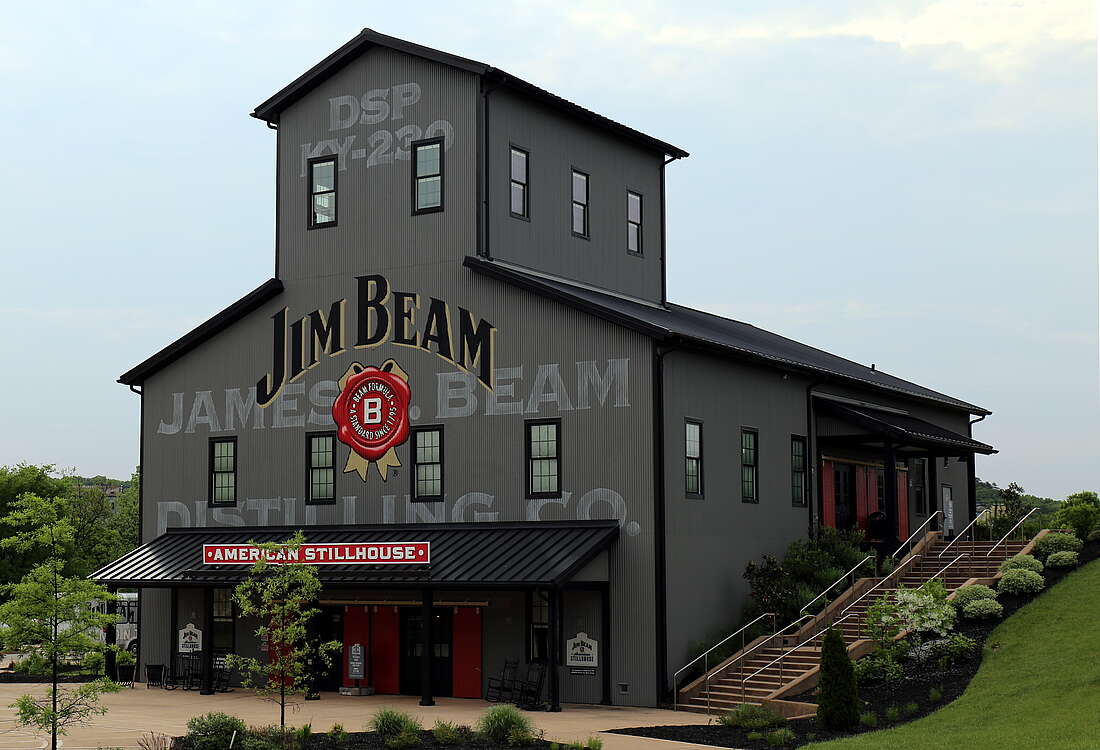


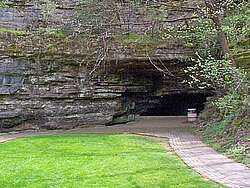
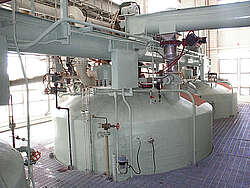















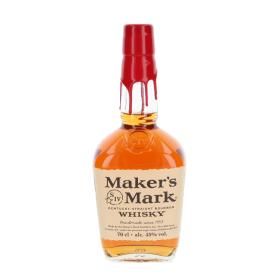






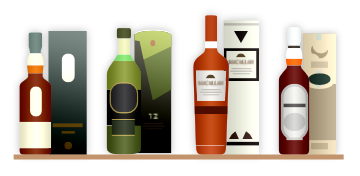
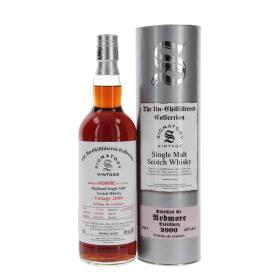



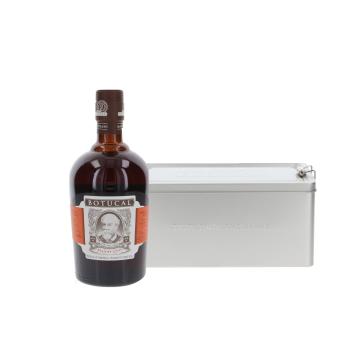

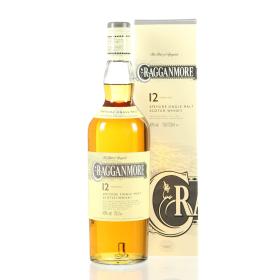
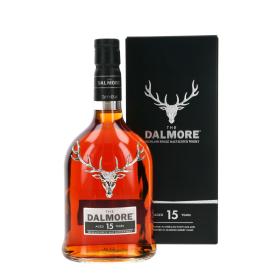







To comment, you must be logged in